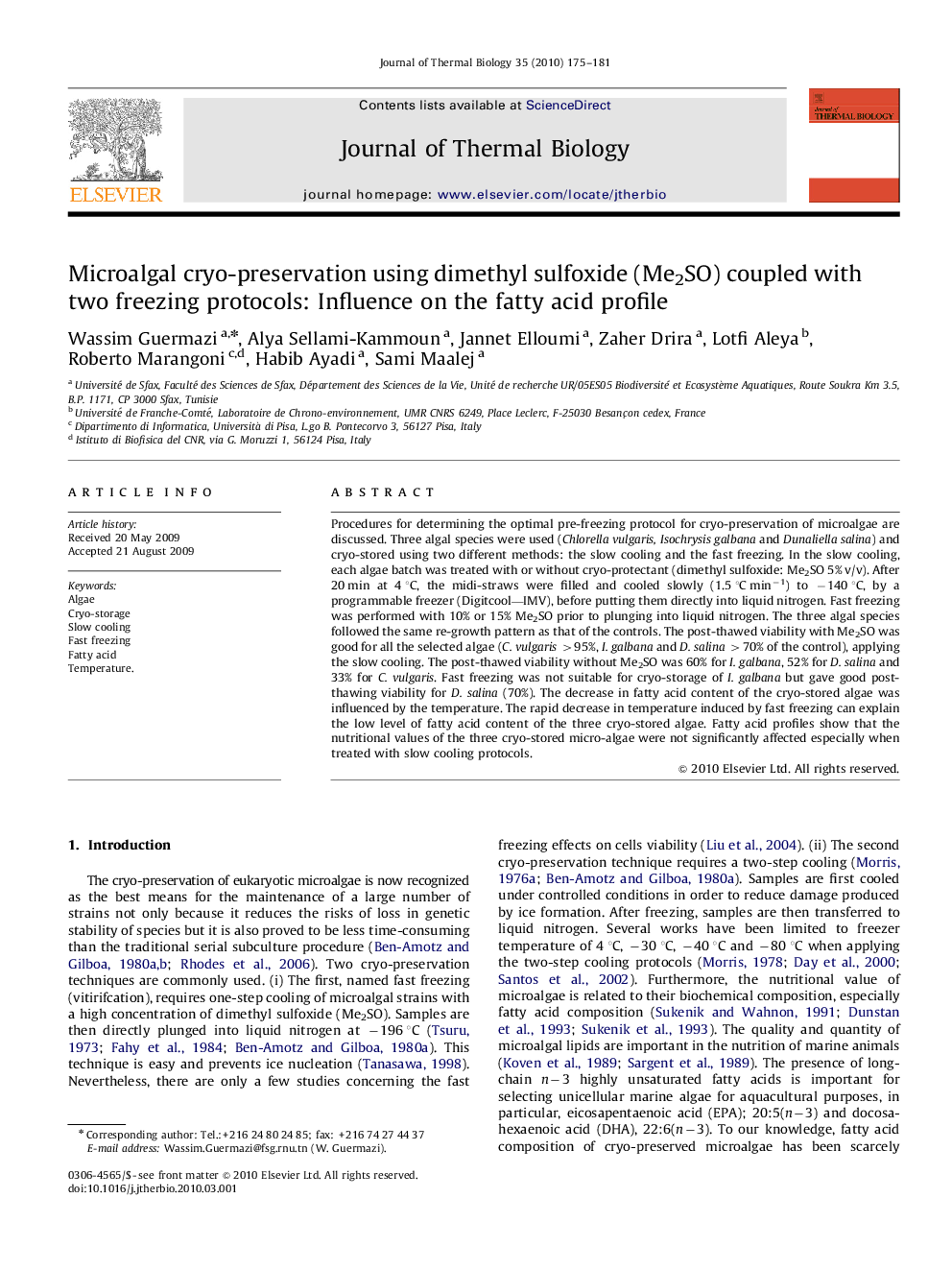| Article ID | Journal | Published Year | Pages | File Type |
|---|---|---|---|---|
| 2843538 | Journal of Thermal Biology | 2010 | 7 Pages |
Procedures for determining the optimal pre-freezing protocol for cryo-preservation of microalgae are discussed. Three algal species were used (Chlorella vulgaris, Isochrysis galbana and Dunaliella salina) and cryo-stored using two different methods: the slow cooling and the fast freezing. In the slow cooling, each algae batch was treated with or without cryo-protectant (dimethyl sulfoxide: Me2SO 5% v/v). After 20 min at 4 °C, the midi-straws were filled and cooled slowly (1.5 °C min−1) to −140 °C, by a programmable freezer (Digitcool—IMV), before putting them directly into liquid nitrogen. Fast freezing was performed with 10% or 15% Me2SO prior to plunging into liquid nitrogen. The three algal species followed the same re-growth pattern as that of the controls. The post-thawed viability with Me2SO was good for all the selected algae (C. vulgaris >95%, I. galbana and D. salina >70% of the control), applying the slow cooling. The post-thawed viability without Me2SO was 60% for I. galbana, 52% for D. salina and 33% for C. vulgaris. Fast freezing was not suitable for cryo-storage of I. galbana but gave good post-thawing viability for D. salina (70%). The decrease in fatty acid content of the cryo-stored algae was influenced by the temperature. The rapid decrease in temperature induced by fast freezing can explain the low level of fatty acid content of the three cryo-stored algae. Fatty acid profiles show that the nutritional values of the three cryo-stored micro-algae were not significantly affected especially when treated with slow cooling protocols.
